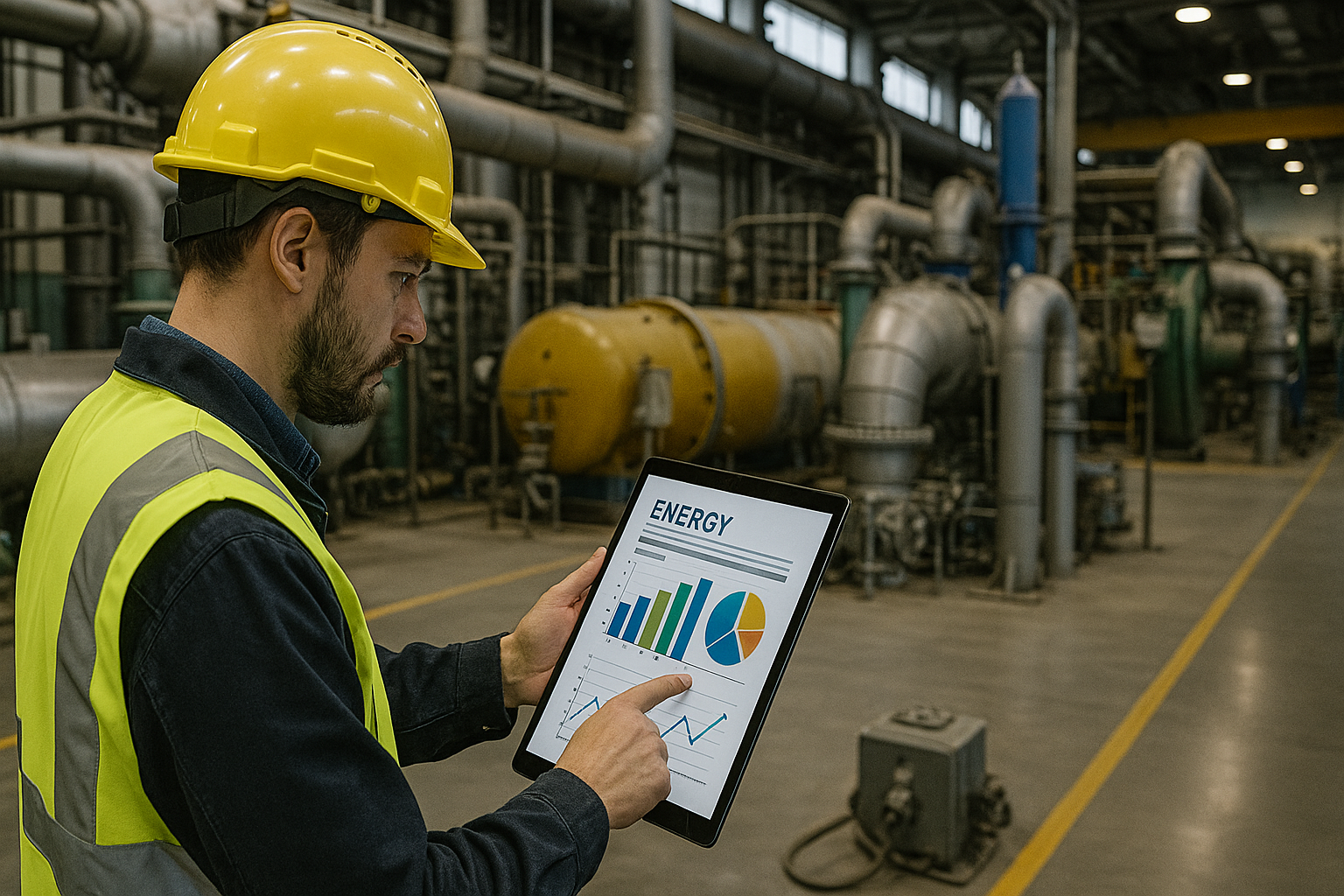How Firms Manage Energy: A Review of Measurement, Allocation, and Efficiency Trends
This systematic review by Philip Dickemann reveals that corporate energy practices are fragmented, with limited use of formal strategies, standardized metrics, or detailed cost allocations. It calls for unified frameworks and more empirical research to support strategic, measurable, and efficient energy management.

Philip Dickemann of the Karlsruhe Institute of Technology delivers a far-reaching and methodologically meticulous analysis of how companies approach energy management, cost accounting, and efficiency. Drawing from 39 empirical studies across 19 peer-reviewed journals, this systematic literature review sheds new light on an area that remains crucial yet inconsistently addressed in business operations. While earlier efforts by researchers like Mickovic and Wouters or Schulze et al. focused separately on either energy cost data or management strategies, Dickemann unifies these themes into a more holistic narrative, one that evaluates energy cost allocation, measurement practices, strategic alignment, and investment decisions. The search process encompassed databases like Scopus and Web of Science, narrowing down over 2,400 publications into a highly curated and relevant sample. Notably, the geographic emphasis is skewed toward European nations, particularly Sweden and Italy, with glaring underrepresentation from North America and Australia.
Invisible Costs and Scattered Allocations
One of the paper’s most unsettling findings is that energy, despite its centrality to production and sustainability, is typically treated as a background cost. Most companies continue to classify energy costs as overhead, diluting their visibility and diminishing their importance in decision-making. Surprisingly, not a single reviewed study incorporated the concept of an “energy cost center”, a management structure introduced by researchers like Bierer and Götze and later expanded by Dobes and Sucic. First-stage energy cost allocation (from invoices to internal cost centers) is discussed sparingly, while second-stage allocation (to products or services) is even rarer. Where it is mentioned, such as in the work of Viesi et al. or Dekamin et al., the analysis tends to be superficial or nontraditional, often embedded within frameworks like Material Flow Cost Accounting (MFCA). This absence of structured allocation models limits both transparency and accountability, making it difficult for companies to benchmark performance or pinpoint inefficiencies.
Measurement: Inconsistent and Underutilized
The paper highlights wide disparities in how companies measure and track energy consumption. While some case studies, like those by Ma et al., reveal the use of smart meters and real-time monitoring systems down to the machine level, most firms still rely on aggregated monthly or even yearly data. Units of measurement range from kilowatt-hours and gigajoules to more complex units like tonnes of oil equivalent, further complicating efforts at standardization. Some companies monitor energy per department or production line, while others collect data only at the company-wide level. Moreover, the purposes of these measurements vary: many firms monitor energy merely to verify utility bills, not to optimize internal operations. As a result, despite the critical role that measurement plays in managing energy costs and performance, the empirical literature offers limited detail about how these practices are implemented on the ground.
Energy Efficiency: Widely Valued, Poorly Defined
Energy efficiency, while universally acknowledged as a key sustainability goal, is rarely defined in concrete or comparable terms. Most studies express support for improving efficiency but fail to explain what metrics are used or how they are applied. There are some notable exceptions. Hossain et al. identify 11 metrics specific to the cement industry, while Bernabé-Custodio et al. explore efficiency improvements through ISO 50001 adoption. Hasan and Trianni also delve into how Industry 4.0 technologies, such as sensors and artificial intelligence, can facilitate efficiency tracking. Nevertheless, the majority of reviewed literature speaks of efficiency in vague terms, lacking specificity or methodological rigor. Furthermore, many studies focus more on the barriers, like high costs, lack of expertise, or internal resistance, than on actual solutions or success stories. There’s also a missed opportunity to link energy efficiency with broader organizational outcomes, such as productivity, profitability, or customer satisfaction, though a few studies make these connections.
Strategic Silence and Short-Term Thinking
The review finds a striking lack of formal energy strategies within most organizations. While many firms articulate energy-saving goals or comply with standards like ISO 50001, few translate these into integrated, long-term strategic plans. In many cases, energy initiatives are subsumed under broader environmental programs, diminishing their visibility and priority. Only a handful of studies, such as those by Lawrence et al. and Hasan et al., offer deep insights into energy strategies as standalone corporate commitments. This reveals a troubling disconnect: while companies acknowledge the value of energy efficiency, they often lack the strategic roadmap to realize it. The problem extends to investment decisions as well. Across the board, companies tend to rely on overly simplistic financial metrics, especially payback periods of one to three years, to assess energy-related capital expenditures. Though methods like NPV, ROI, and IRR are mentioned, they are seldom applied. Non-financial benefits, such as environmental impact, stakeholder trust, or long-term resilience, are rarely factored into investment evaluations, remaining largely informal or secondary considerations.
Toward a Unified Framework and Future Research
In response to the fragmented and shallow treatment of energy practices in existing literature, Dickemann proposes a comprehensive analytical framework that ties together energy cost centers, cost allocation, measurement systems, efficiency metrics, strategy formulation, and investment decision-making. This framework not only provides a roadmap for future academic inquiry but also offers practical value for companies seeking to benchmark and improve their energy performance. The study strongly advocates for further empirical work in underrepresented regions like North America and developing economies, where improved energy practices could yield significant environmental and economic gains. It also calls for standardized, sector-specific efficiency metrics that balance adaptability with comparability, enabling firms to track progress and share best practices more effectively. In sum, this paper is a clarion call to reframe energy not as a background cost, but as a strategic, measurable, and investable asset central to the future of sustainable business.
- FIRST PUBLISHED IN:
- Devdiscourse










